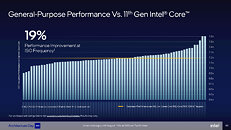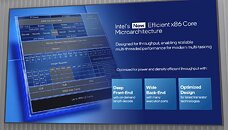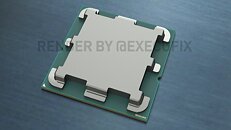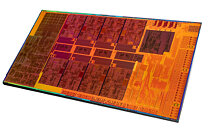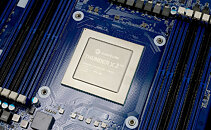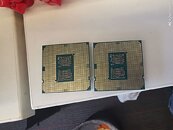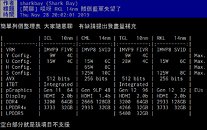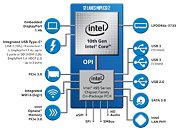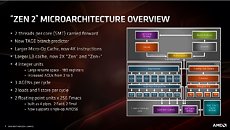Apr 16th, 2025 10:21 EDT
change timezone
Latest GPU Drivers
New Forum Posts
- Need advice RAM for Asus Maximus hero z890 + core ultra 7 265k (0)
- How to relubricate a fan and/or service a troublesome/noisy fan. (230)
- The TPU UK Clubhouse (26118)
- 5070ti overclock...what are your settings? (6)
- Help me identify Chip of this DDR4 RAM (21)
- Last game you purchased? (772)
- Windows 11 fresh install to do list (23)
- GPU Memory Temprature is always high (16)
- Help For XFX RX 590 GME Chinese - Vbios (4)
- PCGH: "hidden site" to see total money spend on steam (3)
Popular Reviews
- G.SKILL Trident Z5 NEO RGB DDR5-6000 32 GB CL26 Review - AMD EXPO
- ASUS GeForce RTX 5080 TUF OC Review
- DAREU A950 Wing Review
- The Last Of Us Part 2 Performance Benchmark Review - 30 GPUs Compared
- Sapphire Radeon RX 9070 XT Pulse Review
- Sapphire Radeon RX 9070 XT Nitro+ Review - Beating NVIDIA
- Upcoming Hardware Launches 2025 (Updated Apr 2025)
- Thermaltake TR100 Review
- Zotac GeForce RTX 5070 Ti Amp Extreme Review
- TerraMaster F8 SSD Plus Review - Compact and quiet
Controversial News Posts
- NVIDIA GeForce RTX 5060 Ti 16 GB SKU Likely Launching at $499, According to Supply Chain Leak (182)
- NVIDIA Sends MSRP Numbers to Partners: GeForce RTX 5060 Ti 8 GB at $379, RTX 5060 Ti 16 GB at $429 (124)
- Nintendo Confirms That Switch 2 Joy-Cons Will Not Utilize Hall Effect Stick Technology (105)
- Over 200,000 Sold Radeon RX 9070 and RX 9070 XT GPUs? AMD Says No Number was Given (100)
- Nintendo Switch 2 Launches June 5 at $449.99 with New Hardware and Games (99)
- Sony Increases the PS5 Pricing in EMEA and ANZ by Around 25 Percent (85)
- NVIDIA Pushes GeForce RTX 5060 Ti Launch to Mid-April, RTX 5060 to May (77)
- NVIDIA PhysX and Flow Made Fully Open-Source (77)
News Posts matching #Skylake
Return to Keyword BrowsingHuawei's HiSilicon Taishan V120 Server Core Matches Zen 3 Performance
Huawei's new server CPU based on the HiSilicon Taishan V120 core has shown impressive single-threaded performance that matches AMD's Zen 3 architecture in a leaked Geekbench 6 benchmark. The Taishan V120 is likely being manufactured on SMIC's 7 nm process node. The Geekbench 6 result posted on social media does not identify the exact Huawei server CPU model, but speculation points to it being the upcoming Kunpeng 930 chip. In the benchmark, the Taishan V120 CPU operating at 2.9 GHz scored 1527 in the single-core test. This positions it nearly equal to AMD's EPYC 7413 server CPU based on the Zen 3 architecture, which boosts up to 3.6 GHz and which scored 1538 points. It also matches the single-threaded performance of Intel's Coffee Lake-based Xeon E-2136 from 2018, even though that Intel chip can reach 4.5 GHz boost speeds, scoring 1553 points.
The Taishan V120 core first appeared in Huawei's Kirin 9000 smartphone SoC in 2020. Using the core in server CPUs would allow Huawei to achieve competitive single-threaded performance to rival AMD's last-generation EPYC Milan and Intel's older Skylake server chips. Multi-threaded benchmarks will be required to gauge the Kunpeng 930's overall performance fully when it launches. Huawei continues innovating its ARM-based server CPU designs even while facing restrictions on manufacturing and selling chips internationally due to its inclusion on the US Entity List in 2019. The impressive single-threaded results versus leading x86 competitors demonstrate Huawei's resilience and self-reliance in developing homegrown data center technology through its HiSilicon division. More details on the Kunpeng 930 server chip will likely surface later this year, along with server configurations from Chinese OEMs.
The Taishan V120 core first appeared in Huawei's Kirin 9000 smartphone SoC in 2020. Using the core in server CPUs would allow Huawei to achieve competitive single-threaded performance to rival AMD's last-generation EPYC Milan and Intel's older Skylake server chips. Multi-threaded benchmarks will be required to gauge the Kunpeng 930's overall performance fully when it launches. Huawei continues innovating its ARM-based server CPU designs even while facing restrictions on manufacturing and selling chips internationally due to its inclusion on the US Entity List in 2019. The impressive single-threaded results versus leading x86 competitors demonstrate Huawei's resilience and self-reliance in developing homegrown data center technology through its HiSilicon division. More details on the Kunpeng 930 server chip will likely surface later this year, along with server configurations from Chinese OEMs.

"Downfall" Intel CPU Vulnerability Can Impact Performance By 50%
Intel has recently revealed a security vulnerability named Downfall (CVE-2022-40982) that impacts multiple generations of Intel processors. The vulnerability is linked to Intel's memory optimization feature, exploiting the Gather instruction, a function that accelerates data fetching from scattered memory locations. It inadvertently exposes internal hardware registers, allowing malicious software access to data held by other programs. The flaw affects Intel mainstream and server processors ranging from the Skylake to Rocket Lake microarchitecture. The entire list of affected CPUs is here. Intel has responded by releasing updated software-level microcode to fix the flaw. However, there's concern over the performance impact of the fix, potentially affecting AVX2 and AVX-512 workloads involving the Gather instruction by up to 50%.
Phoronix tested the Downfall mitigations and reported varying performance decreases on different processors. For instance, two Xeon Platinum 8380 processors were around 6% slower in certain tests, while the Core i7-1165G7 faced performance degradation ranging from 11% to 39% in specific benchmarks. While these reductions were less than Intel's forecasted 50% overhead, they remain significant, especially in High-Performance Computing (HPC) workloads. The ramifications of Downfall are not restricted to specialized tasks like AI or HPC but may extend to more common applications such as video encoding. Though the microcode update is not mandatory and Intel provides an opt-out mechanism, users are left with a challenging decision between security and performance. Executing a Downfall attack might seem complex, but the final choice between implementing the mitigation or retaining performance will likely vary depending on individual needs and risk assessments.
Phoronix tested the Downfall mitigations and reported varying performance decreases on different processors. For instance, two Xeon Platinum 8380 processors were around 6% slower in certain tests, while the Core i7-1165G7 faced performance degradation ranging from 11% to 39% in specific benchmarks. While these reductions were less than Intel's forecasted 50% overhead, they remain significant, especially in High-Performance Computing (HPC) workloads. The ramifications of Downfall are not restricted to specialized tasks like AI or HPC but may extend to more common applications such as video encoding. Though the microcode update is not mandatory and Intel provides an opt-out mechanism, users are left with a challenging decision between security and performance. Executing a Downfall attack might seem complex, but the final choice between implementing the mitigation or retaining performance will likely vary depending on individual needs and risk assessments.

48-Core Russian Baikal-S Processor Die Shots Appear
In December of 2021, we covered the appearance of Russia's home-grown Baikal-S processor, which has 48 cores based on Arm Cortex-A75 cores. Today, thanks to the famous chip photographer Fritzchens Fritz, we have the first die shows that show us exactly how Baikal-S SoC is structured internally and what it is made up of. Manufactured on TSMC's 16 nm process, the Baikal-S BE-S1000 design features 48 Arm Cortex-A75 cores running at a 2.0 GHz base and a 2.5 GHz boost frequency. With a TDP of 120 Watts, the design seems efficient, and the Russian company promises performance comparable to Intel Skylake Xeons or Zen1-based AMD EPYC processors. It also uses a home-grown RISC-V core for management and controlling secure boot sequences.
Below, you can see the die shots taken by Fritzchens Fritz and annotated details by Twitter user Locuza that marked the entire SoC. Besides the core clusters, we see that a slum of cache connects everything, with six 72-bit DDR4-3200 PHYs and memory controllers surrounding everything. This model features a pretty good selection of I/O for a server CPU, as there are five PCIe 4.0 x16 (4x4) interfaces, with three supporting CCIX 1.0. You can check out more pictures below and see the annotations for yourself.
Below, you can see the die shots taken by Fritzchens Fritz and annotated details by Twitter user Locuza that marked the entire SoC. Besides the core clusters, we see that a slum of cache connects everything, with six 72-bit DDR4-3200 PHYs and memory controllers surrounding everything. This model features a pretty good selection of I/O for a server CPU, as there are five PCIe 4.0 x16 (4x4) interfaces, with three supporting CCIX 1.0. You can check out more pictures below and see the annotations for yourself.

Intel Raptor Lake Enablement Continues in Linux Kernel
Intel's Alder Lake CPUs started the wave of hybrid designs spanning the consumer sector with high-performance P-cores and high-efficiency E-cores combined to make a mixed design work. And it seems like the replacement for it is already in progress, as the next-generation Intel "Raptor Lake" processors are continuing enablement in the Linux kernel. This next-generation Raptor Lake design will arrive towards the end of this year, and the software ecosystem is already preparing for its arrival. According to the report from Phoronix, audio support for Intel Raptor Lake processors has been added to the Linux kernel 5.18.
As the report points out, the enablement work is no different since days of Skylake, where adding new IDs to the driver gets the job done. However, what is interesting is that Raptor Lake is slowly getting the entire software ecosystem support functional. This shows with Linux kernel 5.17, where Raptor Lake-S Gen 12-based graphics card received initial software support. As the software matures, full support for Raptor Lake will come, especially as we enter the later months of 2022, when the next generation is supposed to arrive.
As the report points out, the enablement work is no different since days of Skylake, where adding new IDs to the driver gets the job done. However, what is interesting is that Raptor Lake is slowly getting the entire software ecosystem support functional. This shows with Linux kernel 5.17, where Raptor Lake-S Gen 12-based graphics card received initial software support. As the software matures, full support for Raptor Lake will come, especially as we enter the later months of 2022, when the next generation is supposed to arrive.

Russian Baikal-S Processor With 48 Arm-Based Cores Boots Up, Uses RISC-V Coprocessor for Safe Boot and Management
In recent years, government institutions have been funding the development of home-grown hardware that will power the government infrastructure. This trend was born out of a desire to design chips with no back doors implemented so that no foreign body could monitor the government's processes. Today, Russian company Baikal Electronics managed to boot up the Baikal-S processor with 48 cores based on Arm Instruction Set Architecture (ISA). The processor codenamed BE-S1000 manages to operate 48 cores at a 2.0 GHz base frequency, with a maximum boost of 2.5 GHz clock speed. All of that is achieved at the TDP of 120 Watts, making this design very efficient.
When it comes to some server configurations, the Baikal-S processor run in up to four sockets in a server board. It offers a home-grown RISC-V processor for safe boot and management, so the entire SoC is controlled by a custom design. Baikal Electronics provided some benchmark numbers, which you can see in the slides below. They cover SPEC2006 CPU Integer, Coremark, Whetstone, 7Zip, and HPLinkpack performance. Additionally, the company claims that Baikal-S is in line with Intel Xeon Gold 6148 Skylake design and AMD EPYC 7351 CPU based on Zen1 core. Compared to Huawei's Kunpeng 920, the Baikal-S design provides 0.86x performance.
When it comes to some server configurations, the Baikal-S processor run in up to four sockets in a server board. It offers a home-grown RISC-V processor for safe boot and management, so the entire SoC is controlled by a custom design. Baikal Electronics provided some benchmark numbers, which you can see in the slides below. They cover SPEC2006 CPU Integer, Coremark, Whetstone, 7Zip, and HPLinkpack performance. Additionally, the company claims that Baikal-S is in line with Intel Xeon Gold 6148 Skylake design and AMD EPYC 7351 CPU based on Zen1 core. Compared to Huawei's Kunpeng 920, the Baikal-S design provides 0.86x performance.

ASUS Z690 Motherboard Lineup Hits Regulators, Mix of DDR5 and DDR4 Variants
A list of upcoming ASUS motherboards based on the Intel Z690 chipset hit the radar on the Euasian Economic Commission (EEC) website, and it's telling. Intel's upcoming "Alder Lake-S" 12th Gen Core desktop processors support both DDR5 and DDR4 memory, as they form a point of transition between the two memory standards. The company's 6th Gen Core "Skylake" technically supported DDR3, helping people move between it and the then new DDR4, but motherboard vendors mostly avoided DDR3 slots. This time, the stakes are different, as component prices are on the boil, and the company would want to avoid placing the additional burden of new memory on people with DDR4 memory kits. This reflects on the ASUS motherboard lineup.
The lineup consists of the usual, predictable list of ROG Maximus, ROG Strix, TUF Gaming, Prime, and ProArt series SKUs, but what's noteworthy is that many of these come with the extension "D4," denoting DDR4 memory slots. For example, something like the Prime Z690-A comes in two variants, the standard one with DDR5 slots, and the "D4" variant with DDR4. It's interesting to note here, that the top-of-the-line ROG Maximus XIV series lacks any D4 variant, which means they'll remain DDR5-exclusive. We can't tell just from the names whether any of these models features both DDR5 and DDR4 slots; but one can definitely expect other brands such as ASRock to come up with such crazy contraptions.
The lineup consists of the usual, predictable list of ROG Maximus, ROG Strix, TUF Gaming, Prime, and ProArt series SKUs, but what's noteworthy is that many of these come with the extension "D4," denoting DDR4 memory slots. For example, something like the Prime Z690-A comes in two variants, the standard one with DDR5 slots, and the "D4" variant with DDR4. It's interesting to note here, that the top-of-the-line ROG Maximus XIV series lacks any D4 variant, which means they'll remain DDR5-exclusive. We can't tell just from the names whether any of these models features both DDR5 and DDR4 slots; but one can definitely expect other brands such as ASRock to come up with such crazy contraptions.

ASUS Rolls Out BIOS Updates for Windows 11 Support on Kaby Lake, Skylake
ASUS has begun rolling out BIOS updates that add motherboard support for Windows 11 even for processor families that Microsoft said would be left out of their latest Windows OS. Ever since the introduction of Windows 11, the message around specific hardware requirements has been difficult to pinpoint, as the company struggles to send a clear message on exactly which users should be looking to update their hardware - and which should not. ASUS' new BIOS updates will certainly add to the stirring pot, as they are being touted to enable Windows 11 support for Intel CPU families that Microsoft doesn't officially (yet) support for the OS release: Skylake (6th Gen) and Kaby Lake (7th Gen). According to Microsoft, only 8th Gen (Coffee Lake) and later Intel CPUs are supported by Windows 11.
The new BIOS updates typically activate TPM on the users' machine, should it be off at the BIOS level. ASUS has already released beta BIOS versions that introduce support for Windows 11 on Z270, H270 and B250 motherboards, and launched a hub page with compatibility status for a number of its motherboard releases. According to the company in the respective motherboard support pages, "The following motherboards are compatible with Windows 11 under current testing. The upgrability [sic] is subject to the support from operation system or 3rd party drivers availability." Which of course means that even if ASUS has gotten preview versions of Windows 11 to run on systems with this hardware, there's no way to know if the final, retail Windows 11 version will actually offer support for these CPUs. Of course, driver compatibility is also in question, since nothing guarantees Windows 11 to competently manage your hardware on the basis of Windows 10-bound driver packages.
The new BIOS updates typically activate TPM on the users' machine, should it be off at the BIOS level. ASUS has already released beta BIOS versions that introduce support for Windows 11 on Z270, H270 and B250 motherboards, and launched a hub page with compatibility status for a number of its motherboard releases. According to the company in the respective motherboard support pages, "The following motherboards are compatible with Windows 11 under current testing. The upgrability [sic] is subject to the support from operation system or 3rd party drivers availability." Which of course means that even if ASUS has gotten preview versions of Windows 11 to run on systems with this hardware, there's no way to know if the final, retail Windows 11 version will actually offer support for these CPUs. Of course, driver compatibility is also in question, since nothing guarantees Windows 11 to competently manage your hardware on the basis of Windows 10-bound driver packages.

Intel Golden Cove P-Core Offers 19% IPC Gain Over Cypress Cove (Rocket Lake)
The 8 "Golden Cove" performance cores (P-cores) present on 12th Gen "Alder Lake-S" desktop processors offer an IPC gain of 19% over the "Cypress Cove" cores powering current 11th Gen "Rocket Lake-S" processors, claims Intel. This would put them at roughly 35% higher IPC than the "Skylake" cores that powered Intel client desktop processors until as recently as 2020, with the 10th Gen "Comet Lake." This 19% number, however, is presented as a geomean of performance improvement at iso-frequency, across a wide selection of tests that include SPEC CPU 2017, SYSmark 25, Crossmark, PCMark 10, WebXPRT3, and Geekbench 5.4.1.
The high IPC of the P-cores, coupled with the high rumored frequencies for the enthusiast i9-12900K part running well into 5.30 GHz or beyond, begins to explain how 8 of these "Golden Cove" cores, coupled with 8 fairly fast "Gracemont" cores, closes in on the 16-core AMD Ryzen 9 5950X at Cinebench R20.
The high IPC of the P-cores, coupled with the high rumored frequencies for the enthusiast i9-12900K part running well into 5.30 GHz or beyond, begins to explain how 8 of these "Golden Cove" cores, coupled with 8 fairly fast "Gracemont" cores, closes in on the 16-core AMD Ryzen 9 5950X at Cinebench R20.

Intel's Secret Sauce at Catching Up with AMD Core Count is the Gracemont E-core and its Mind-boggling Perf/Watt
When early benchmarks of the Core i9-12900K "Alder Lake-S" processor showing performance comparable to AMD's top 16-core Ryzen 9 5950X surfaced, we knew something was up. 8 Intel P-cores and 8 E-cores, are able to match 16 "Zen 3" cores that are all performance cores. Apparently Intel is able to turn its P-core deficit around by taking a wacky approach. First, the 8 "Golden Cove" P-cores themselves offer significantly higher IPC than "Zen 3." Second, the 8 "Gracemont" E-cores aren't as "slow" as conventional wisdom would suggest.
Intel in its Architecture Day presentation put out some astounding numbers that help support how 8 big + 8 little cores are able to perform in the league of 16 AMD big cores. Apparently, on "Alder Lake-S," the 8 "Gracemont" E-cores enjoy a lavish power budget, and are able to strike an incredible performance/Watt sweet-spot. Intel claims that the "Gracemont" E-core offers 40% higher performance at ISO power than a "Skylake" core (Intel's workhorse P-core for desktops until as recently as 2020); which means it consumes 40% less power at comparable performance.
Intel in its Architecture Day presentation put out some astounding numbers that help support how 8 big + 8 little cores are able to perform in the league of 16 AMD big cores. Apparently, on "Alder Lake-S," the 8 "Gracemont" E-cores enjoy a lavish power budget, and are able to strike an incredible performance/Watt sweet-spot. Intel claims that the "Gracemont" E-core offers 40% higher performance at ISO power than a "Skylake" core (Intel's workhorse P-core for desktops until as recently as 2020); which means it consumes 40% less power at comparable performance.

AMD Ryzen 7000 Series "Raphael" Zen 4 Processor IHS Design Gets Leaked
AMD is preparing to switch things up a bit with its upcoming AM5 platform. The new platform is said to bring significant changes to the design of the socket and the CPU package, where we will see some new design choices and decisions. For starters, all of the processors made for the AM5 platform will come in a land grid array (LGA) configuration, very similar to that of Intel. Thanks to the rendering of ExecutableFix, we got to see exactly how will the new LGA design look like. And today, we get to see more details of the AMD's upcoming Raphael processor's integrated heat spreader (IHS) design.
The IHS serves the purpose of spreading the heat away from the die and dissipating it efficiently. However, IHS designs can sometimes be very interesting. According to this rendering from ExecutableFix, AMD's upcoming Raphael design, based on Zen 4 core, will feature a unique IHS design, which can be seen below.
The IHS serves the purpose of spreading the heat away from the die and dissipating it efficiently. However, IHS designs can sometimes be very interesting. According to this rendering from ExecutableFix, AMD's upcoming Raphael design, based on Zen 4 core, will feature a unique IHS design, which can be seen below.

Intel "Rocket Lake-S" Die Annotated
Intel is betting big on an 8-core processor to revive its gaming performance leadership, and that chip is the 11th Generation Core "Rocket Lake-S," coming this March. In its 2021 International CES online event, Intel disclosed more details about "Rocket Lake-S," including the first true-color die-shot. PC enthusiast @Locuza_ on Twitter annotated the die for your viewing pressure. For starters, nearly half the die-area of the "Rocket Lake-S" is taken up by the uncore and iGPU, with the rest going to the eight "Cypress Cove" CPU cores.
The "Cypress Cove" CPU core is reportedly a back-port of "Willow Cove" to the 14 nm silicon fabrication node, although there are some changes, beginning with its cache hierarchy. A "Cypress Cove" core is configured with the same L1I and L1D cache sizes as "Willow Cove," but differ with L2 and L3 cache sizes. Each "Cypress Cove" core is endowed with 512 KB of dedicated L2 cache (which is a 100% increase from the 256 KB on "Skylake" cores); but this pales in comparison to the 1.25 MB L2 caches of "Willow Cove" cores on the "Tiger Lake-U" silicon. Also, the L3 cache for the 8-core "Rocket Lake-S" die is 16 MB, spread across eight 2 MB slices; while the 4-core "Tiger Lake-U" features 12 MB of L3, spread across four 3 MB slices. Each core can address the whole L3 cache, across all slices.
The "Cypress Cove" CPU core is reportedly a back-port of "Willow Cove" to the 14 nm silicon fabrication node, although there are some changes, beginning with its cache hierarchy. A "Cypress Cove" core is configured with the same L1I and L1D cache sizes as "Willow Cove," but differ with L2 and L3 cache sizes. Each "Cypress Cove" core is endowed with 512 KB of dedicated L2 cache (which is a 100% increase from the 256 KB on "Skylake" cores); but this pales in comparison to the 1.25 MB L2 caches of "Willow Cove" cores on the "Tiger Lake-U" silicon. Also, the L3 cache for the 8-core "Rocket Lake-S" die is 16 MB, spread across eight 2 MB slices; while the 4-core "Tiger Lake-U" features 12 MB of L3, spread across four 3 MB slices. Each core can address the whole L3 cache, across all slices.

Intel Confirms Rocket Lake-S Features Cypress Cove with Double-Digit IPC Increase
Today, Intel has decided to surprise us and give an update to its upcoming CPU lineup for desktop. With the 11th generation, Core CPUs codenamed Rocket Lake-S, Intel is preparing to launch the new lineup in the first quarter of 2021. This means that we are just a few months away from this launch. When it comes to the architecture of these new processors, they are going to be based on a special Cypress Cove design. Gone are the days of Skylake-based designs that were present from the 6th to 10th generation processors. The Cypress Cove, as Intel calls it, is an Ice Lake adaptation. Contrary to the previous rumors, it is not an adaptation of Tiger Lake Willow Cove, but rather Ice Lake Sunny Cove.
The CPU instruction per cycle (IPC) is said to grow in double-digits, meaning that the desktop users are finally going to see an improvement that is not only frequency-based. While we do not know the numbers yet, we can expect them to be better than the current 10th gen parts. For the first time on the Intel platform for desktops, we will see the adoption of PCIe 4.0 chipset, which will allow for much faster SSD speeds and support the latest GPUs, specifically, there will be 20 PCIe 4.0 lanes coming from the CPU only. The CPU will be paired with 12th generation Xe graphics, like the one found in Tiger Lake CPUs. Other technologies such as Deep Learning Boost and VNNI, Quick Sync Video, and better overclocking tuning will be present as well. Interesting thing to note here is that the 10C/20T Core i9-10900K has a PL1 headroom of 125 W, and 250 W in PL2. However, the 8C/16T Rocket Lake-S CPU also features 125 W headroom in PL1, and 250 W in PL2. This indicates that the new Cypress Cove design runs hotter than the previous generation.
The CPU instruction per cycle (IPC) is said to grow in double-digits, meaning that the desktop users are finally going to see an improvement that is not only frequency-based. While we do not know the numbers yet, we can expect them to be better than the current 10th gen parts. For the first time on the Intel platform for desktops, we will see the adoption of PCIe 4.0 chipset, which will allow for much faster SSD speeds and support the latest GPUs, specifically, there will be 20 PCIe 4.0 lanes coming from the CPU only. The CPU will be paired with 12th generation Xe graphics, like the one found in Tiger Lake CPUs. Other technologies such as Deep Learning Boost and VNNI, Quick Sync Video, and better overclocking tuning will be present as well. Interesting thing to note here is that the 10C/20T Core i9-10900K has a PL1 headroom of 125 W, and 250 W in PL2. However, the 8C/16T Rocket Lake-S CPU also features 125 W headroom in PL1, and 250 W in PL2. This indicates that the new Cypress Cove design runs hotter than the previous generation.

Bad Intel Quality Assurance Responsible for Apple-Intel Split?
Apple's decision to switch from Intel processors for its Mac computers to its own, based on the Arm architecture, has shaken up the tech world, even though rumors of the transition have been doing rounds for months. Intel's first official response, coupled with facts such as Intel's CPU technology execution being thrown completely off gear due to foundry problems; pointed toward the likelihood of Intel not being able to keep up with Apple's growing performance/Watt demands. It turns out now, that Intel's reasons are a lot more basic, and date back to 2016.
According to a sensational PC Gamer report citing former Intel principal engineer François Piednoël, Apple's dissatisfaction with Intel dates back to some of its first 14 nm chips, based on the "Skylake" microarchitecture. "The quality assurance of Skylake was more than a problem," says Piednoël. It was abnormally bad. We were getting way too much citing for little things inside Skylake. Basically our buddies at Apple became the number one filer of problems in the architecture. And that went really, really bad. When your customer starts finding almost as much bugs as you found yourself, you're not leading into the right place," he adds.
According to a sensational PC Gamer report citing former Intel principal engineer François Piednoël, Apple's dissatisfaction with Intel dates back to some of its first 14 nm chips, based on the "Skylake" microarchitecture. "The quality assurance of Skylake was more than a problem," says Piednoël. It was abnormally bad. We were getting way too much citing for little things inside Skylake. Basically our buddies at Apple became the number one filer of problems in the architecture. And that went really, really bad. When your customer starts finding almost as much bugs as you found yourself, you're not leading into the right place," he adds.

Intel "Willow Cove" Backported to 14nm is "Cypress Cove"?
Intel's 11th generation Core "Rocket Lake-S" desktop processor is fascinating as it introduces Intel's first CPU core IPC uptick in about half a decade. Until now, it was rumored that "Rocket Lake-S" features a back-port of Intel's "Willow Cove" CPU cores to the 14 nm silicon fabrication process. It turns out that Intel doesn't want to call these cores "Willow Cove," which make their debut with the 10 nm+ "Tiger Lake" mobile processors later this Summer. Enter "Cypress Cove." A Moore's Law is Dead video presentation sheds light on this mysterious new codename.
Apparently, "Cypress Cove" is the codename Intel is using to refer to the CPU cores Intel is building with its latest CPU core IP on older 14 nm process. Owing to the process, the IPC of these cores may be different from the "Willow Cove" cores on "Tiger Lake," and to avoid confusion, Intel possibly choosing to give it a different internal codename. In other words, Moore's Law is Dead believes that "Cypress Cove" may not offer the alleged 25% IPC gains over "Skylake" that you could expect instead from "Willow Cove" cores in "Tiger Lake."
Apparently, "Cypress Cove" is the codename Intel is using to refer to the CPU cores Intel is building with its latest CPU core IP on older 14 nm process. Owing to the process, the IPC of these cores may be different from the "Willow Cove" cores on "Tiger Lake," and to avoid confusion, Intel possibly choosing to give it a different internal codename. In other words, Moore's Law is Dead believes that "Cypress Cove" may not offer the alleged 25% IPC gains over "Skylake" that you could expect instead from "Willow Cove" cores in "Tiger Lake."

Intel 10th Generation Comet Lake Desktop Processors and 400-Series Chipsets Announced, Here's what's New
Intel today launched its 10th generation Core desktop processor family and its companion Intel 400-series chipsets. Based on the 14 nm++ silicon fabrication process and built in the new LGA1200 package, the processors are based on the "Comet Lake" microarchitecture. The core design of "Comet Lake" and its IPC are identical to those of "Skylake," however Intel brought significant enhancements to the processor's clock-speed boosting algorithm, increased core- or thread counts across the board, and introduced new features that could interest enthusiasts and overclockers. The uncore component remains largely unchanged from the previous-generation, with support for DDR4 memory and PCI-Express gen 3.0. Use of these processors requires a new socket LGA1200 motherboard, they won't work on older LGA1151 motherboards. You can install any LGA115x-compatible cooler on LGA1200, provided it meets the thermal requirements of the processor you're using.
At the heart of the 10th generation Core processor family is a new 10-core monolithic processor die, which retains the same basic structure as the previous-generation 8-core "Coffee Lake Refresh" die, and 4-core "Skylake." The cores are arranged in two rows, sandwiched by the processor's uncore and iGPU blocks. A ring-bus interconnect binds the various components. The cache hierarchy is unchanged from previous generations as well, with 32 KB each of L1I and L1D caches; 256 KB of dedicated L2 cache per core, and 20 MB of shared L3 cache. The iGPU is the same Gen 9.5 based UHD 630 graphics. As we mentioned earlier, much of Intel's innovation for the 10th generation is with the processor's microcode (boosting algorithms).
At the heart of the 10th generation Core processor family is a new 10-core monolithic processor die, which retains the same basic structure as the previous-generation 8-core "Coffee Lake Refresh" die, and 4-core "Skylake." The cores are arranged in two rows, sandwiched by the processor's uncore and iGPU blocks. A ring-bus interconnect binds the various components. The cache hierarchy is unchanged from previous generations as well, with 32 KB each of L1I and L1D caches; 256 KB of dedicated L2 cache per core, and 20 MB of shared L3 cache. The iGPU is the same Gen 9.5 based UHD 630 graphics. As we mentioned earlier, much of Intel's innovation for the 10th generation is with the processor's microcode (boosting algorithms).

x86 Lacks Innovation, Arm is Catching up. Enough to Replace the Giant?
Intel's x86 processor architecture has been the dominant CPU instruction set for many decades, since IBM decided to put the Intel 8086 microprocessor into its first Personal Computer. Later, in 2006, Apple decided to replace their PowerPC based processors in Macintosh computers with Intel chips, too. This was the time when x86 became the only option for the masses to use and develop all their software on. While mobile phones and embedded devices are mostly Arm today, it is clear that x86 is still the dominant ISA (Instruction Set Architecture) for desktop computers today, with both Intel and AMD producing processors for it. Those processors are going inside millions of PCs that are used every day. Today I would like to share my thoughts on the demise of the x86 platform and how it might vanish in favor of the RISC-based Arm architecture.
Both AMD and Intel as producer, and millions of companies as consumer, have invested heavily in the x86 architecture, so why would x86 ever go extinct if "it just works"? The answer is that it doesn't just work.
Both AMD and Intel as producer, and millions of companies as consumer, have invested heavily in the x86 architecture, so why would x86 ever go extinct if "it just works"? The answer is that it doesn't just work.

Intel Core i9-10900K and i7-10700K Allegedly Pictured
Alleged pictures of the upcoming Intel Core i9-10900K and i7-10700K processors made it to Chinese social media. The blurry-cam pictures of the chips' topside don't reveal much other than the "Intel Confidential" markings, denoting that these chips are engineering samples. The reverse side confirm that these are chips are built in the new LGA1200 package. You can also spot electrical ancillaries laid out unlike any previous-gen Intel package, and different socket key notches.
In the run up to the rumored April 2020 launch we could learn more about these chips. Based on the 14 nm "Comet Lake" silicon, Intel's 10th generation Core desktop processors in the LGA1200 package increase logical processor counts across the board, and increase clock speeds. The i9-10900K is a 10-core/20-thread processor with 20 MB of shared L3 cache, and up to 5.10 GHz boost frequency, with 4.80 GHz all-core boost. The i7-10700K, on the other hand, is an 8-core/16-thread chip with 16 MB L3 cache, and clock speeds of 5.00 GHz boost and 4.50 GHz all-core Turbo. The Core i5 series also gets a shot in the arm, being configured as 6-core/12-thread, with 12 MB of L3 cache. The per-core performance (IPC) is expected to be the same as 6th generation "Skylake."
In the run up to the rumored April 2020 launch we could learn more about these chips. Based on the 14 nm "Comet Lake" silicon, Intel's 10th generation Core desktop processors in the LGA1200 package increase logical processor counts across the board, and increase clock speeds. The i9-10900K is a 10-core/20-thread processor with 20 MB of shared L3 cache, and up to 5.10 GHz boost frequency, with 4.80 GHz all-core boost. The i7-10700K, on the other hand, is an 8-core/16-thread chip with 16 MB L3 cache, and clock speeds of 5.00 GHz boost and 4.50 GHz all-core Turbo. The Core i5 series also gets a shot in the arm, being configured as 6-core/12-thread, with 12 MB of L3 cache. The per-core performance (IPC) is expected to be the same as 6th generation "Skylake."

Intel 400-series Chipset Motherboards to Lack PCIe Gen 4.0, Launch Pushed to Q2
Intel's upcoming 400-series desktop chipset will lack support for PCI-Express gen 4.0. The motherboards will stick to gen 3.0 for both the main x16 PEG slots wired to the LGA1200 socket, and general purpose PCIe lanes from the PCH, according to a Tom's Hardware report. It was earlier expected that 400-series chipset motherboards will come with preparation for PCIe gen 4.0, so even if the upcoming 10th gen "Comet Lake" desktop processors lacked gen 4.0 root-complexes, the boards would be fully ready for the new bus standard in 11th gen "Rocket Lake" desktop processors.
10th gen "Comet Lake" desktop processors are built on 14 nm process, and implement Intel's current-gen CPU core design Intel has been implementing since 6th gen "Skylake." It's only with 11th gen "Rocket Lake" that the mainstream desktop platform could see a new CPU core design, with the company reportedly back-porting "Willow Cove" CPU cores to the 14 nm process. "Rocket Lake" is also expected to feature a small Gen12 iGPU with 32 execution units, and a new-gen uncore component that implements PCIe gen 4.0. PCIe gen 4.0 doubles bandwidth over gen 3.0, and while only a handful GPUs support it, the standard is made popular by a new generation of M.2 NVMe SSDs that are able to utilize the added bandwidth to push sequential transfer rates beyond M.2 PCIe 3.0 x4 limitations.
10th gen "Comet Lake" desktop processors are built on 14 nm process, and implement Intel's current-gen CPU core design Intel has been implementing since 6th gen "Skylake." It's only with 11th gen "Rocket Lake" that the mainstream desktop platform could see a new CPU core design, with the company reportedly back-porting "Willow Cove" CPU cores to the 14 nm process. "Rocket Lake" is also expected to feature a small Gen12 iGPU with 32 execution units, and a new-gen uncore component that implements PCIe gen 4.0. PCIe gen 4.0 doubles bandwidth over gen 3.0, and while only a handful GPUs support it, the standard is made popular by a new generation of M.2 NVMe SSDs that are able to utilize the added bandwidth to push sequential transfer rates beyond M.2 PCIe 3.0 x4 limitations.

Intel Reportedly Looking Into Further Reduction in CPU Pricing for 2020
Intel's policy on CPU pricing has been a strong, definite one for years: no price reductions. Faced with less than admirable competition from a struggling AMD back in its Phenom and especially Bulldozer days, Intel enforced a heavy hand on the market and on CPU pricing. However, a much revitalized AMD and difficulties in the transition to the 10 nm process have left Intel with no other recourse than to cut pricing on its CPUs in order to remain competitive. No uptake of new I/O technologies such as PCIe 4.0 has also taken its toll on Intel's position in the server and HEDT market, which has led to recent price-cuts and tightening of Intel's Xeon line of CPUs - as well as price-cuts in the order of 50% in their Cascade Lake-X processors compared to the previous generation.
DigiTimes, citing industry PC makers, says that Intel is gearing up to keep fighting in the only front it actually can, besides puny core count increases on their heavily-iterated Skylake architecture - pricing. This move comes in a bid to keep its market dominance, which Intel themselves have said - after Zen 2, that is - isn't a priority for the consumer market. You can rest assured that Intel is very, very likely already practicing hefty price reductions for tray-quantity purchases for partners. However, it seems that the company might bring some price cuts on to its upcoming Comet Lake CPUs. The company has always been loathe to reduce pricing on existing inventory, rather choosing to reduce the price on new launches (see the Cascade Lake-X example above), which, arguably, saves Intel's face on claims of only being able to compete on pricing - which lurks dangerously close to Intel being painted as the budget, price-cut alternative to AMD.
DigiTimes, citing industry PC makers, says that Intel is gearing up to keep fighting in the only front it actually can, besides puny core count increases on their heavily-iterated Skylake architecture - pricing. This move comes in a bid to keep its market dominance, which Intel themselves have said - after Zen 2, that is - isn't a priority for the consumer market. You can rest assured that Intel is very, very likely already practicing hefty price reductions for tray-quantity purchases for partners. However, it seems that the company might bring some price cuts on to its upcoming Comet Lake CPUs. The company has always been loathe to reduce pricing on existing inventory, rather choosing to reduce the price on new launches (see the Cascade Lake-X example above), which, arguably, saves Intel's face on claims of only being able to compete on pricing - which lurks dangerously close to Intel being painted as the budget, price-cut alternative to AMD.

Intel CPU Based on New Architecture Leaks
Today Intel's CPU based on yet unannounced architecture got revealed in the SiSoft benchmark database. Featuring six cores and twelve threads running at 3 GHz, it appears like a regular 14 nm CPU that's already available, however, when digging through the details, many things are revealed. The newly submitted CPU has a different L2 cache configuration from previous CPU offerings, with this chip featuring 1.25 MB of L2 cache per core, it is unlike anything else Intel currently offers. Ice Lake mobile chips feature 512 KB, while the highest amount of L2 cache is currently present on i9-10980XE, which features 1 MB of L2.
It is unknown where this CPU fits in the whole 14/10 nm lineup, as we don't know if this is an iteration of 10 nm Tiger Lake or the rumored 14 nm Rocket Lake CPU. All we know is that this CPU features new architecture compared to Skylake iterations that are currently being used, judging by L2 cache bump, which usually happens on new architectures. The platform used for benchmarking this CPU was SuperMicro X12DAi-N SMC X12 dual-socket motherboard, which featured two of these new CPUs for a total of 12 cores and 24 threads.
It is unknown where this CPU fits in the whole 14/10 nm lineup, as we don't know if this is an iteration of 10 nm Tiger Lake or the rumored 14 nm Rocket Lake CPU. All we know is that this CPU features new architecture compared to Skylake iterations that are currently being used, judging by L2 cache bump, which usually happens on new architectures. The platform used for benchmarking this CPU was SuperMicro X12DAi-N SMC X12 dual-socket motherboard, which featured two of these new CPUs for a total of 12 cores and 24 threads.

Intel "Rocket Lake-S" Desktop Processor Comes in Core Counts Up to 8, Gen12 iGPU Included
Intel's 11th generation Core "Rocket Lake-S" desktop processor will come in core-counts only up to 8, even as its predecessor, "Comet Lake-S," goes up to 10. Platform descriptors for Intel's next four microarchitectures surfaced on the web, detailing maximum values of their "S" (mainsteam desktop), "H" (mainstream notebook), "U" (ultrabook), and "Y" (low power portable) flavors. Both "Comet Lake-S" and "Rocket Lake-S" are 14 nm chips. "Comet Lake-S" comes with core counts of up to 10, a TDP of up to 125 Watts, Gen 9LP iGPU with 48 execution units, and native support for up to 128 GB of DDR4-2667.
The "Rocket Lake-S" silicon is interesting. Rumored to be yet another derivative of "Skylake," it features up to 8 CPU cores, the same 125 W maximum TDP, but swanky Gen12 iGPU with 32 execution units. The memory controller is also upgraded, which supports DDR4-2933 natively. There is no "Ice Lake-H" or "Ice Lake-S" in sight (no mainstream notebook or mainstream desktop implementations), ditto "Tiger Lake." For the foreseeable future, Intel will only make quad-core designs of the two 10 nm microarchitectures. "Rocket Lake-S" is slated for 2021 when, hopefully, we'll see Intel escape the 14 nm black hole.
The "Rocket Lake-S" silicon is interesting. Rumored to be yet another derivative of "Skylake," it features up to 8 CPU cores, the same 125 W maximum TDP, but swanky Gen12 iGPU with 32 execution units. The memory controller is also upgraded, which supports DDR4-2933 natively. There is no "Ice Lake-H" or "Ice Lake-S" in sight (no mainstream notebook or mainstream desktop implementations), ditto "Tiger Lake." For the foreseeable future, Intel will only make quad-core designs of the two 10 nm microarchitectures. "Rocket Lake-S" is slated for 2021 when, hopefully, we'll see Intel escape the 14 nm black hole.

Intel Scraps 10nm for Desktop, Brazen it Out with 14nm Skylake Till 2022?
In a shocking piece of news, Intel has reportedly scrapped plans to launch its 10 nm "Ice Lake" microarchitecture on the client desktop platform. The company will confine its 10 nm microarchitectures, "Ice Lake" and "Tiger Lake" to only the mobile platform, while the desktop platform will see derivatives of "Skylake" hold Intel's fort under the year 2022! Intel gambles that with HyperThreading enabled across the board and increased clock-speeds, it can restore competitiveness with AMD's 7 nm "Zen 2" Ryzen processors with its "Comet Lake" silicon that offers core-counts of up to 10.
"Comet Lake" will be succeeded in 2021 by the 14 nm "Rocket Lake" silicon, which somehow combines a Gen12 iGPU with "Skylake" derived CPU cores, and possibly increased core-counts and clock speeds over "Comet Lake." It's only 2022 that Intel will ship out a truly new microarchitecture on the desktop platform, with "Meteor Lake." This chip will be built on Intel's swanky 7 nm EUV silicon fabrication node, and possibly integrate CPU cores more advanced than even "Willow Cove," possibly "Golden Cove."
"Comet Lake" will be succeeded in 2021 by the 14 nm "Rocket Lake" silicon, which somehow combines a Gen12 iGPU with "Skylake" derived CPU cores, and possibly increased core-counts and clock speeds over "Comet Lake." It's only 2022 that Intel will ship out a truly new microarchitecture on the desktop platform, with "Meteor Lake." This chip will be built on Intel's swanky 7 nm EUV silicon fabrication node, and possibly integrate CPU cores more advanced than even "Willow Cove," possibly "Golden Cove."

Intel Marketing Tries to Link Stability to Turbo Boost
There is no correlation between CPU frequency boosting behavior and system stability. Intel today launched its "10th generation" Core X HEDT processors, with core-counts ranging between 10 to 18, priced between $590 and $978. Based on the 14 nm "Cascade Lake-X" silicon, these chips have the same exact IPC as "Skylake" circa 2015, but offer nearly double the number of cores to the Dollar compared to the 9th generation Core X series; and add a couple of useful instruction sets such as DLBoost, which accelerates DNN training/building; a few more AVX-512 instructions, and an updated Turbo Boost Max 3.0 algorithm. The chips offer clock-speed bumps over the previous generation.
Intel's main trade-call for these processors? Taking another stab at AMD for falling short on boost frequency in the hands of consumers. "The chip that hits frequency benchmarks as promised, our new #CoreX -series processor, provides a stable, high-performance platform for visual creators everywhere," reads the Intel tweet, as if to suggest that reaching the "promised" clock speed results in stability. AMD was confronted with alarming statistics of consumers whose 3rd generation Ryzen processors wouldn't reach their advertised boost frequencies. The company released an updated AGESA microcode that fixed this.
Intel's main trade-call for these processors? Taking another stab at AMD for falling short on boost frequency in the hands of consumers. "The chip that hits frequency benchmarks as promised, our new #CoreX -series processor, provides a stable, high-performance platform for visual creators everywhere," reads the Intel tweet, as if to suggest that reaching the "promised" clock speed results in stability. AMD was confronted with alarming statistics of consumers whose 3rd generation Ryzen processors wouldn't reach their advertised boost frequencies. The company released an updated AGESA microcode that fixed this.

Intel 10th Generation Core "Comet Lake" Lineup Detailed
Intel's short-term reaction to AMD's 3rd generation Ryzen processor family is the 10th generation Core "Comet Lake." These processors are based on existing "Skylake" cores, but have core-counts increased at the top-end, and HyperThreading enabled across the entire lineup. The Core i3 series are now 4-core/8-thread; the Core i5 series a 6-core/12-thread, the Core i7 series are 8-core/16-thread, and the new Core i9 series are 10-core/20-thread. Besides core-counts, Intel has given its 14 nanometer node one last step of refinement to come up with the new 14 nm+++ nodelet. This enables Intel to significantly dial up clock speeds across the board. These processors come in the new LGA1159 package, and are not backwards-compatible with LGA1151 motherboards. These chips also appear to feature an on-package PCH, instead of chipset on the motherboard.
Leading the pack is the Core i9-10900KF, a 10-core/20-thread chip clocked at 4.60 GHz with 5.20 GHz Turbo Boost, 20 MB of shared L3 cache, native support for DDR4-3200, and a TDP of 105 W. Intel's new 10-core die appears to physically lack an iGPU, since none of the other Core i9 10-core models offer integrated graphics. For this reason, all three processor models have the "F" brand extension denoting lack of integrated graphics. The i9-10900KF is closely followed by the i9-10900F clocked at 4.40/5.20 GHz, the lack of an unlocked multiplier, and 95 W TDP rating. The most affordable 10-core part is the i9-10800F, clocked at 4.20 GHz with 5.00 GHz boost, and a TDP of just 65 W. Intel has set ambitious prices for these chips. The i9-10900KF is priced at $499, followed by the i9-10900F at $449, and the i9-10800F at $409.
Leading the pack is the Core i9-10900KF, a 10-core/20-thread chip clocked at 4.60 GHz with 5.20 GHz Turbo Boost, 20 MB of shared L3 cache, native support for DDR4-3200, and a TDP of 105 W. Intel's new 10-core die appears to physically lack an iGPU, since none of the other Core i9 10-core models offer integrated graphics. For this reason, all three processor models have the "F" brand extension denoting lack of integrated graphics. The i9-10900KF is closely followed by the i9-10900F clocked at 4.40/5.20 GHz, the lack of an unlocked multiplier, and 95 W TDP rating. The most affordable 10-core part is the i9-10800F, clocked at 4.20 GHz with 5.00 GHz boost, and a TDP of just 65 W. Intel has set ambitious prices for these chips. The i9-10900KF is priced at $499, followed by the i9-10900F at $449, and the i9-10800F at $409.

AMD Ryzen 5 3600 Beats Intel Core i9-9900KF at PassMark - CPU Mark Single-Thread
In more evidence of AMD having finally achieved or exceeded IPC parity with Intel, a mid-range Ryzen 5 3600 processor beats Intel's current mainstream-desktop flagship processor, the Core i9-9900KF, at the PassMark - CPU Mark single-thread benchmark. The official performance chart for PassMark shows the Ryzen 5 3600 leading the pack, with 2,981 points, a score which is 1.77 percent higher than that of the Core i9-9900KF on the same chart. It also beats the Core i9-9900K by 2.86 percent. Interestingly, the chart does not mention whether the Ryzen 5 3600 is running at its stock frequency of 3.60 GHz with 4.20 GHz boost, or whether it's overclocked. The i9-9900KF boosts to 5.00 GHz. For a single-threaded benchmark, it's generally assumed that the maximum boost multiplier is engaged on both chips. The score can't be dismissed due to this uncertainty, either, because AMD achieving a 1-2 percent IPC uplift over "Skylake" (fine, "Coffee Lake,") isn't impossible given the leaps the company made in the past three years.
Apr 16th, 2025 10:21 EDT
change timezone
Latest GPU Drivers
New Forum Posts
- Need advice RAM for Asus Maximus hero z890 + core ultra 7 265k (0)
- How to relubricate a fan and/or service a troublesome/noisy fan. (230)
- The TPU UK Clubhouse (26118)
- 5070ti overclock...what are your settings? (6)
- Help me identify Chip of this DDR4 RAM (21)
- Last game you purchased? (772)
- Windows 11 fresh install to do list (23)
- GPU Memory Temprature is always high (16)
- Help For XFX RX 590 GME Chinese - Vbios (4)
- PCGH: "hidden site" to see total money spend on steam (3)
Popular Reviews
- G.SKILL Trident Z5 NEO RGB DDR5-6000 32 GB CL26 Review - AMD EXPO
- ASUS GeForce RTX 5080 TUF OC Review
- DAREU A950 Wing Review
- The Last Of Us Part 2 Performance Benchmark Review - 30 GPUs Compared
- Sapphire Radeon RX 9070 XT Pulse Review
- Sapphire Radeon RX 9070 XT Nitro+ Review - Beating NVIDIA
- Upcoming Hardware Launches 2025 (Updated Apr 2025)
- Thermaltake TR100 Review
- Zotac GeForce RTX 5070 Ti Amp Extreme Review
- TerraMaster F8 SSD Plus Review - Compact and quiet
Controversial News Posts
- NVIDIA GeForce RTX 5060 Ti 16 GB SKU Likely Launching at $499, According to Supply Chain Leak (182)
- NVIDIA Sends MSRP Numbers to Partners: GeForce RTX 5060 Ti 8 GB at $379, RTX 5060 Ti 16 GB at $429 (124)
- Nintendo Confirms That Switch 2 Joy-Cons Will Not Utilize Hall Effect Stick Technology (105)
- Over 200,000 Sold Radeon RX 9070 and RX 9070 XT GPUs? AMD Says No Number was Given (100)
- Nintendo Switch 2 Launches June 5 at $449.99 with New Hardware and Games (99)
- Sony Increases the PS5 Pricing in EMEA and ANZ by Around 25 Percent (85)
- NVIDIA Pushes GeForce RTX 5060 Ti Launch to Mid-April, RTX 5060 to May (77)
- NVIDIA PhysX and Flow Made Fully Open-Source (77)














